Unless your windows look out onto a spectacular view unimpeded by neighbors—and maybe even then—you probably want some sort of soft window treatment. Curtains, drapes, shades, and blinds provide varying degrees of privacy, insulation, and filtering of sunlight… and of course, they can enhance a room’s appearance as well.
Generally speaking, drapes offer the most formality, followed by curtains, with shades and blinds leaning more casual or modern. But of course there are modern, minimalist curtains and soft, sumptuous shades.There are also other things to take into consideration when deciding which window treatment to choose. For starters, what’s the difference between drapes and curtains, let alone between pinch pleats and tab tops?
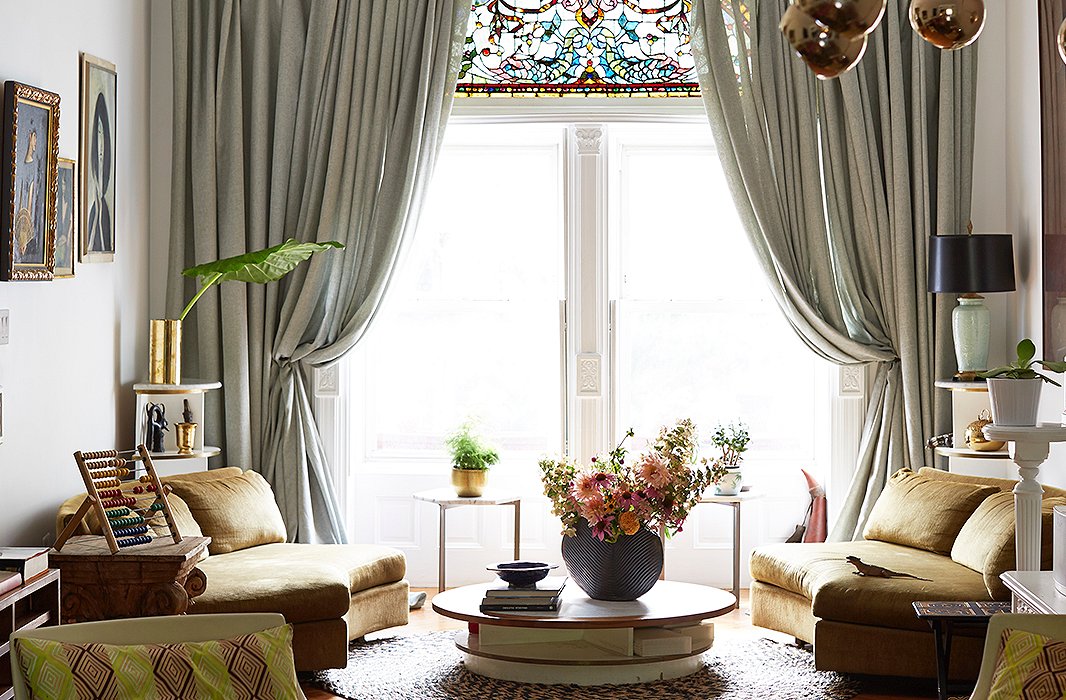
For drapes with optimal fullness, the width of the panels should be approximately twice the width of the windows. Photo by Manuel Rodriguez.
Is It Curtains for You?
If you use curtains and drapes interchangeably, you’re not alone. Technically, however, curtains are fabric panels, usually unlined and made of lightweight materials such as linen or cotton that let in some sunlight. Drapes are made of heavier, opaque fabrics such as velvet or lined silk and usually feature some sort of pleating along the top. Closing the drapes in a bedroom should ensure that the sunlight does not wake you in the morning; drawing the curtains offers no such guarantee.
When selecting curtains, you have a choice of hanging styles. With rod-pocket curtains, sometimes called casement curtains, the curtain rod is slipped through a flap or pocket of fabric stitched onto the curtain’s back, across the top. This style often has small hooks in the back as well so that the curtain can be hung from the rod via rings, in case you want the rod to be visible and the rings to serve almost as jewelry.
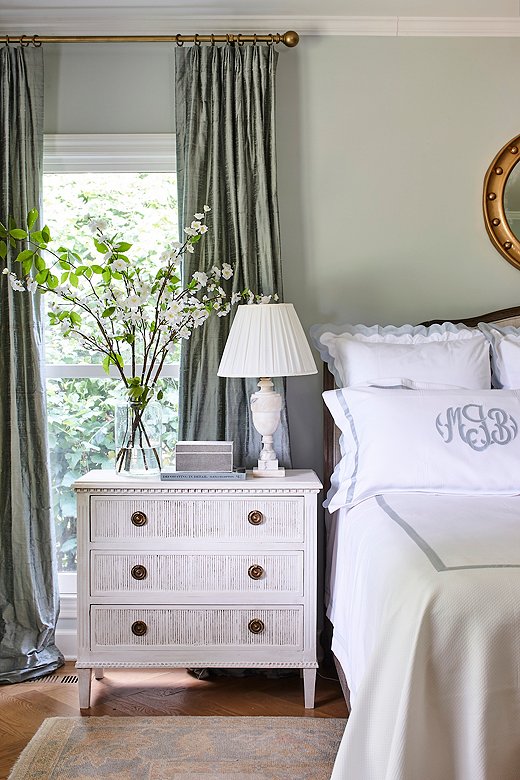
The “puddle” of excess drapery fabric on the floor imbues a room with a sense of timeless luxury. Photo by Laurey Glenn.

Because these curtains (by One Kings Lane for The Shade Store) are in the same family of neutrals as the rest of the room, they add pattern while maintaining the room’s serene ambience.
As you’d expect, grommet (also called eyelet) curtains have holes rimmed with metal rings that your curtain rod will go through. Similarly, tab-top curtains have fabric tabs to accommodate the rod. If you expect to be opening and closing the curtains frequently, grommets are your best options, as they glide most smoothly along the rod. Grommet and tab-top curtains typically look more casual than rod-pocket styles.
Pleated drapes are more formal still. These generally have a rod pocket and hooks so that they can be hung with or without rings. The variety of pleats is staggering: simple accordion pleats, classic pinch pleats, tailored box pleats, ornate swagged fan pleats. Certain pleat styles work better with solids than with patterns and require fabrics of significant heft.
The above curtains and drapes are generally meant to hang from the top of or above the window to the floor. For an extravagantly sumptuous effect, let as much as six inches of fabric puddle on the floor (but keep in mind that this extra fabric will require extra cleaning, especially if you have pets that shed).
Café curtains are an exception when it comes to length. These shorty curtains are meant to cover only part of a window; typically they hang from the top to halfway down or from the middle to the sill. In a bathroom they can provide privacy without completely obscuring the view; in an office they help minimize glare while still allowing in some sunshine.
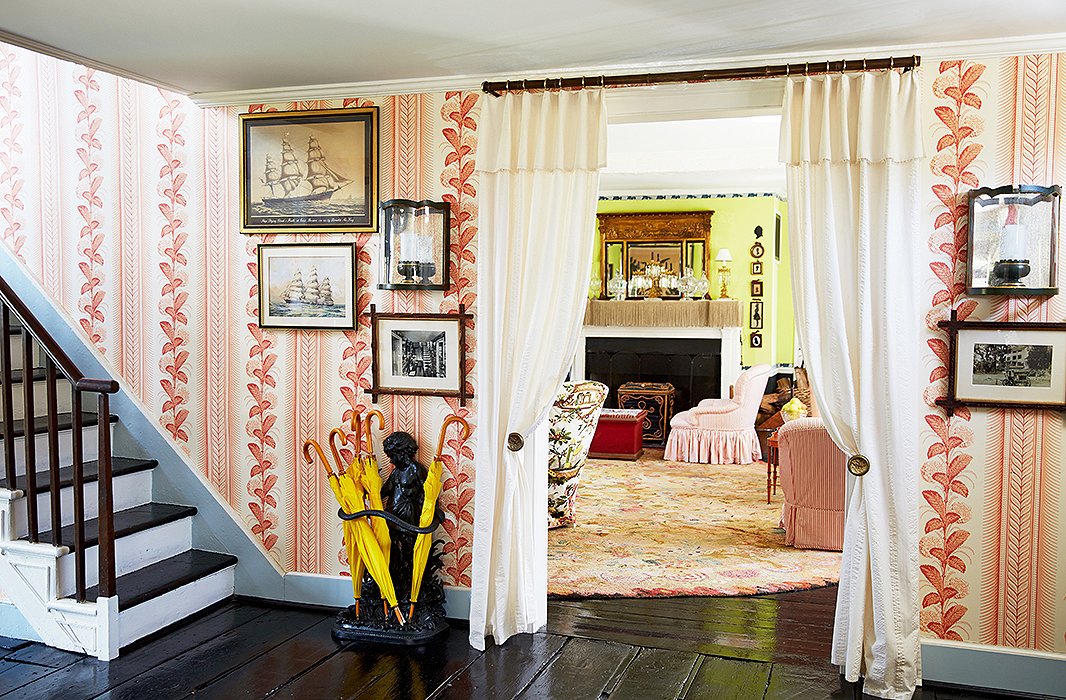
Who says curtains and drapes are only for windows? Certainly not designer Jeffrey Bilhuber, who uses them to frame the view of the living room in his 17th-century farmhouse. Photo by Tony Vu.
Made for Shades
Shades and blinds are also bandied about indiscriminately, though they are two distinct things. Blinds have slats; a shade is typically a long piece of fabric with a roller or other mechanism on top.
Because the slats of blinds can be adjusted to lie flat or to tilt, they offer greater flexibility in terms of how much light they allow in. The clunky and loud metal and vinyl slats of decades ago have given way to wood, bamboo, and even fabric-covered slats. That said, the mechanisms that adjust the slats and raise and lower the blinds are fragile and can break, and many people are daunted by the mere thought of wiping down all those slats. What’s more, the cords of blinds are a strangulation hazard for little ones and need to be securely fastened out of their reach.
Shades are available in materials ranging from translucent to opaque. Far from the standard white and ecru that our parents usually had to settle for, today’s roller shades are available in just about any color, pattern, or fabric you can imagine. Because they fit snugly within a window frame, they offer a tailored, sleek look and are ideal for bathrooms, kitchens, and other spaces where flowing window treatments simply aren’t practical, and for smaller spaces in general.
Cellular, or honeycomb shades, which feature horizontal pockets, offer less variety but are highly effective in terms of insulation. Roman and balloon shades are another option. Because they form folds of fabric when raised, they offer the softness of a curtain or a drape while maintaining a streamlined sensibility. Again, any cords need to be securely fastened out of reach of kids.

Shades in a lively pattern bring modern sophistication to an otherwise rustic space.
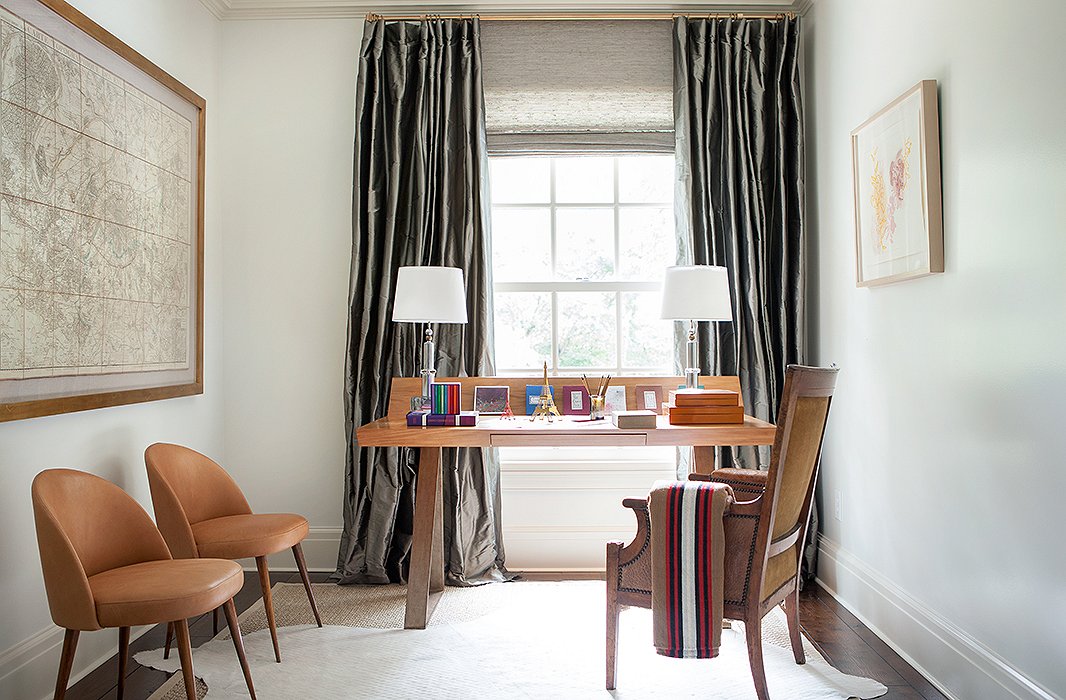
Tailored blinds help filter sunlight; the drapes can be pulled shut to block out light completely on especially bright days or left open to add a touch of romance to a largely functional space. Photo by Erica George-Dines.
Star Treatments
If you’re torn between window treatment types—maybe you love the look of linen curtains but want the privacy of shades—you don’t have to choose. Instead you can pair curtains or drapes with blinds or shades to get the best of both worlds. This is especially effective if you have window air-conditioners or radiators below your windows: Even when you’re keeping the curtains open so as not to block the airflow, the shades or blinds can still provide privacy.
In short:
• for maximum insulation, consider cellular shades.
• for maximum light control, consider blinds.
• for a formal look, consider drapes.
• for a tailored effect, consider shades.
• for the utmost flexibility, consider layering drapes or curtains over shades or blinds.
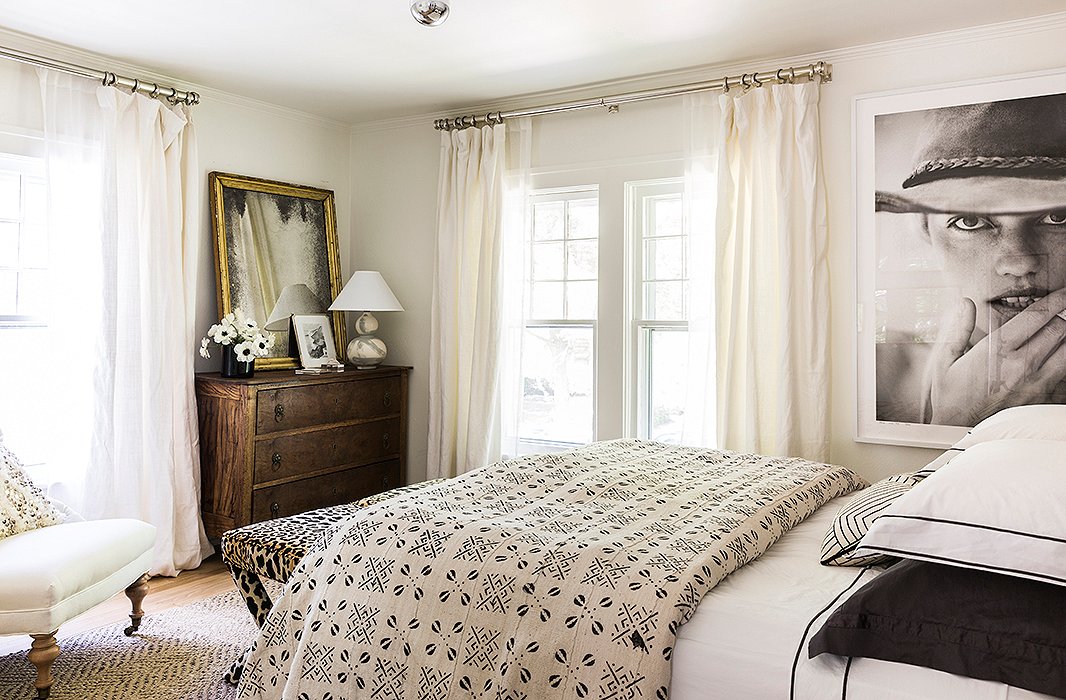
Double-hung curtains—sheer panels closer to the window and heavier panels in front—make it easy to adjust the amount of sunlight you allow in while giving the room a European ease.
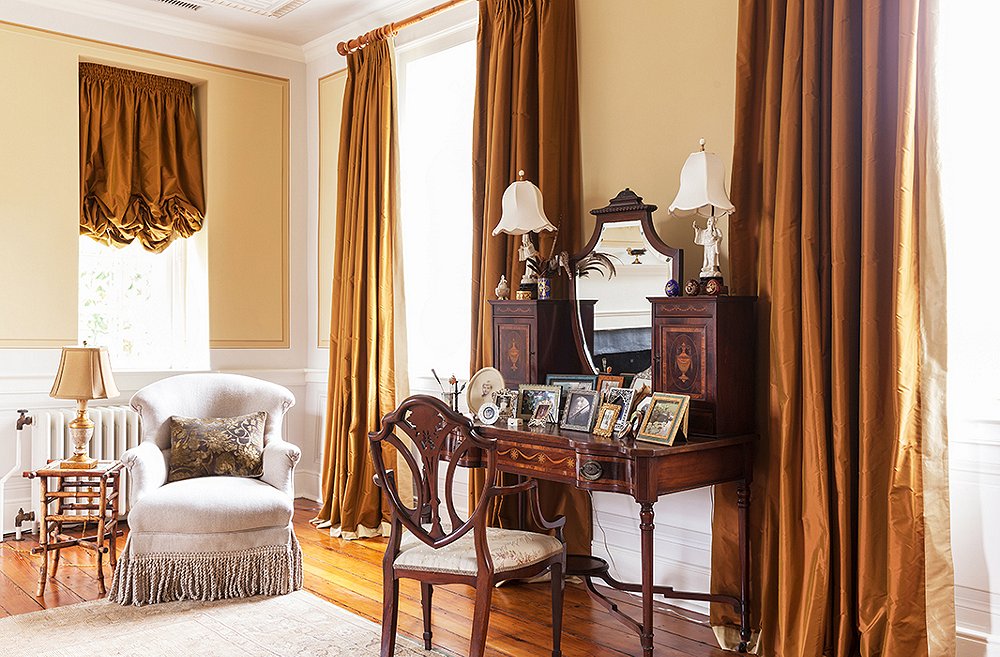
Join the Discussion